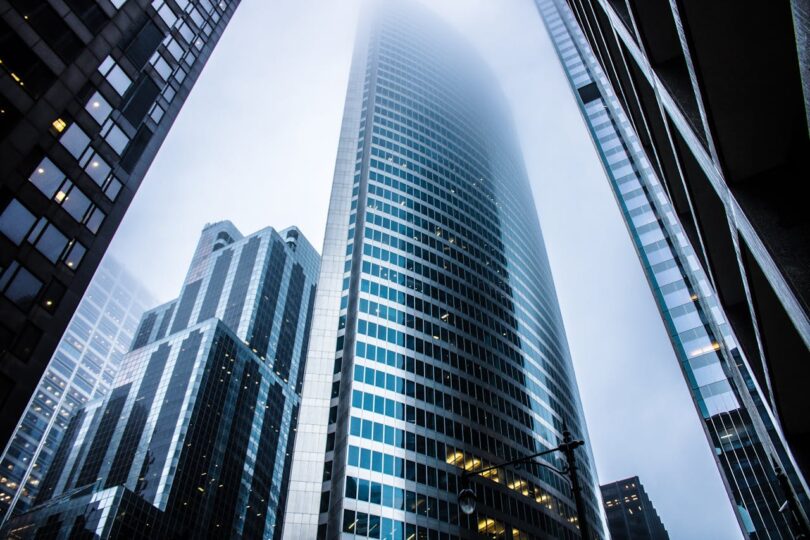We live in a world fashioned by man’s remarkable ability to translate creative ideas into palpable reality. No place is this astonishing capability more evident than in the architectural design landscape.
Particularly, with its unique mix of Aboriginal and European influences, the architectural tapestry is rich and varied. Transforming abstract thoughts into tangible structures, architectural design plays a critical role in shaping our environment, directly impacting how we live, work, and express ourselves.
At the heart of architecture lies an intricate process – the conversion of vision into substance. This process involves a plethora of creative minds, but none play as significant a role as building designers. They are the harbingers of form and function, journeying from the realm of imagination to the grit of construction sites, bringing to life designs that shape our cities, towns, and communities.
Understanding the role of building designers
Often underrated, building designers are the unsung heroes of the architectural world. They are the translators interpreting the language of architects into technical drawings and specifications that builders can implement. To comprehend their role better, consider the Sydney Opera House. Its iconic sail-like design wasn’t merely a whim of architect Jørn Utzon’s mind, but a vision brought to life by meticulous building designers.
The creative contribution of building designers is multidimensional. They influence the creation, shaping, and development of the physical environment. Consider the residential houses in the Melbourne suburbs, characterised by their tapered rooftops and large glass windows – elements that distinctly tie the journey of the house’s inhabitants to the outside world. This remarkable connection between interior and exterior was birthed through the inventive ideas and technical skills of building designers.
Beyond aesthetics, building designers also have a crucial role in ensuring that buildings are functional, safe, and sustainable. They engage in detailed technical analyses and adhere to environmental regulations, promoting a better-lived experience while contributing to urban development and global sustainability objectives.
The design process demystified: From concept to reality
The process by which building designers convert concepts into reality is nothing short of magic. In the words of renowned building designer James Grose, “Our job isn’t just about constructing buildings; it’s about constructing experiences.” He speaks to the vital role that building designers play – taking an architect’s vision and turning it into a space that connects and resonates with the people who use it.
This process begins with the concept stage, where building designers ensure the design’s functionality, safety, and overall aesthetics. It progresses towards the creation of technical drawings and specifications, where the details of the project are meticulously outlined. Finally, in the construction phase, these concepts and specifications transform into tangible structures, through the rigorous implementation of carefully drafted plans.
Inspiration, sketches, and digital renderings
The earliest stages of the design process are perhaps the most vital. For building designers, inspirations can come from anywhere – the intrinsic patterns of nature, the hustle of urban life, the rhythm of music, or the serenity of art. It is this inspirational stage that fuels the initial sketches, the first tangible form of the conceptualised design.
Sketching allows the designers to flesh out their ideas, to test and re-test the scales, sizes and proportions. Almost like a silent conversation with oneself, this iterative stage involves many changes and refinements, as designers seek to reach a harmony of form and function.
Gradually, these sketches are translated into digital renderings using powerful software such as AutoCAD or Revit. These digital images provide a more accurate representation of the proposed design, allowing deeper discussions about design amendment and potential problem solving.
The technicalities: Planning, permits, and building codes
Any architectural endeavour is governed by a complex stratification of laws and codes. Building designers, therefore, must navigate the technicalities of planning permissions, codes, and regulations, while ensuring the design’s integrity remains intact.
They must familiarise themselves with local zoning laws and building regulations, which may include height restrictions, heritage protections or regulations around environmental sustainability. Using their technical knowledge, they navigate this maze of requirements and constraints, ensuring that designs adhere to these codes without compromising the vision and functionality.
Overcoming challenges: When reality meets concept
Bringing a concept to life is rarely a smooth process. Building designers often encounter unexpected obstacles – from site-specific issues like poor soil quality or unanticipated subterranean structures to budget constraints, client modifications and changes in design plans. These challenges demand flexibility, creativity and a meticulous eye for detail.
A fitting example can be seen in the transformation of Sydney’s Carriageworks building. Incorporating the existing 19th-Century railway workshop into a new, multi-disciplinary arts centre posed numerous challenges. However, through thoughtful planning and innovative problem-solving, the building designers were able to preserve the heritage while introducing modern elements to serve the demands of a contemporary arts space.
Building designers Vs. The World: Sustainability in architecture design
Sustainability has become a global concern, and the architectural industry is no exception. With buildings contributing significantly to greenhouse gas emissions, building designers are leveraging innovative approaches to reduce the environmental footprint.
They work on energy-efficient designs, capitalizing on renewable energy sources, and incorporate sustainable materials into their designs all while ensuring the utility and visual appeal of the buildings remain high. The Pixel Building in Melbourne, touted as “greenest” office building, is a testament to this, epitomizing the successful marriage of sustainability and design.
The future of building designers in architecture
As we look towards the future, the role of building designers is likely to evolve significantly. Technological advancements such as 3D printing, virtual reality, and Building Information Modeling (BIM) are set to revolutionise the architectural industry. These tools offer new opportunities for building designers to create more detailed, immersive, and interactive designs, enhancing the overall architectural process.
Not just technology, but design trends too are changing. There is a growing emphasis on wellness-focused and biophilic designs, affordable housing, and adaptive reuse projects. These emerging trends will influence the role of building designers, ultimately paving the way for more creative, inclusive, and sustainable architectural landscapes.
The final word
The role of building designers in architecture is pivotal. They are the linchpin that holds the architectural process together, translating visions into substance, and shaping our environment. Though faced with various challenges, they are relentless in their pursuits, achieving the delicate balance of form, function, and legality to create spaces that resonate with us.
By appreciating this crucial role, we can better understand and value the built environment that surrounds us. This appreciation, in turn, encourages a deepened sense of responsibility towards creating a sustainable future through architecture.
.
“The opinions expressed by BizWitty Contributors are their own, not those of BizCover and should not be relied upon in place of appropriate professional advice. Please read our full disclaimer."







